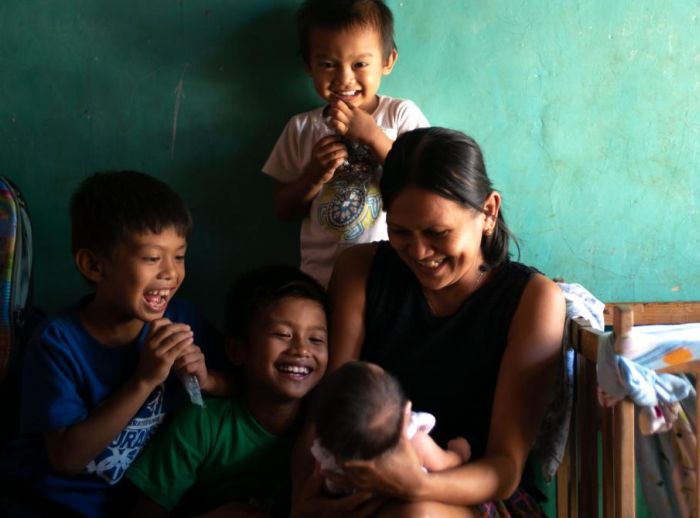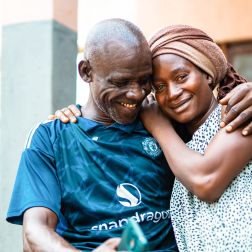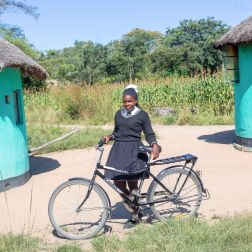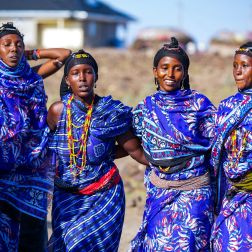- 11 mins read time
- Published: 17th April 2020
Ideas for a Pro-Poor and Pro-Women Approach to COVID-19

On 11 March 2020, the World Health Organization declared COVID-19 as a pandemic with 114 countries affected and more than 4,000 people dead as a result of the coronavirus. The Philippines is among those countries and the Philippine government, foremost the Department of Health, has issued various guidelines. The Food and Drug Administration has approved the test kit developed by the University of the Philippines and this could hasten and improve the tracking and monitoring of persons who might have been exposed to the virus, thus leading to the treatment of patients. Information on self-quarantine or isolation, social distancing, working from home and lockdowns are being spread through various communication channels. As with any crisis, local governments are taking action and are rightly at the forefront.
But as with any humanitarian situation, the approach tends to overlook how inequality plays out and how the crisis has a different and worse impact on poor people, especially poor women. Anyone can be exposed to the virus. But the poor are most vulnerable because they do not have the means to cope on their own. They are the majority users of jam-packed MRTs, buses, and jeepneys where social distancing will be next to impossible, and are dependent on public health systems that are often overwhelmed in normal times, let alone in a crisis. Poor workers, especially those dependent on a daily wage ─ isang kahig, isang tuka (work for a day, eat for a day) ─ would not be able to afford to miss work. An ER nurse had posted a story about someone running away because he did not want to be forced to go on sick leave. But at some point, businesses will likely have to slow down or close temporarily, leaving workers empty handed with even lesser means to buy food and medicine. Meanwhile, urban poor homes and communities are also going to be the places where disease can spread easily and quickly.
As with any crisis, the responsibility of caring for the family and making both ends meet grow heavier on the shoulders of women, including elderly women who, by social norm and by convenience, often take care of the family while the younger ones go to work. Women’s multiple burdens of needing to contribute to the household income while also taking care of the young, the elderly and the sick mean women have the longest days, the shortest rest and the highest stress, making them easy targets of disease. Even if they do manage to stay healthy, their conditions require special attention and action.
What can local governments do?
Local governments are rooted in the context of their communities. At the same time, they are the interlocutors for local community concerns with national government. While COVID-19 cases have not yet peaked in the Philippines, there is plenty that local governments can do to address COVID-19 in a way that is pro-poor and pro-women.
Government needs to develop an approach that relies on whole-of-government and whole-of-society strategies. While its bias is towards the poor and women, we are all in this public health situation together, and thus must work as one. A very initial thinking on a pro-poor, pro-women COVID-19 approach has raised the following ideas to see which ones can be done immediately in partnership with other stakeholders such as civil society and business.
These include:
Information Campaigns
- Massive health information campaigns in urban poor communities in a language, formats and channels that they understand and trust
- Keep two-way communication channels open and working. Follow up to see if there are questions and concerns and provide a channel for them to feedback to the local government that, in turn, must promptly address those questions and concerns
- Partner with community-based organizations and other civil society groups to provide neighbors with information on preventive measures and where to go if someone in the community falls ill
- A specific message on lockdowns — because this causes fear and panic which do not help
Public Health Measures
-
Prioritize screening, monitoring and treatment for urban poor communities. As usual, those who have the means will tend to hog health resources, leaving others in the margins
-
Partner with employers and business owners on workplace public health measures such as the provision of hand sanitizers, soap and water
-
Extend sanitation measures to public places such as wet markets, tricycle terminals and all other public transport facilities
-
Continue to work with and get support from the national government on stringent screening, vigilant identification of primary and secondary contacts in the case of exposure, and quarantine for primary exposure at government health centres
-
Plan local government support for mandatory home quarantine for secondary exposure. The police and the local health authorities can work together to monitor home quarantines on a regular basis and report information so health and contingency responses can be coordinated
-
Ensure a complete ban on non-essential gatherings and events
-
Ensure essential facilities in local government hospitals. Get the cooperation of private hospitals
-
Lessons from other countries that have managed similar and even worse epidemics show that local governments did not just rely on domestic or national government-led research and protocols. They also explored opportunities to collaborate with international agencies. The international donor community in the Philippines may be able to provide a network of contacts as well as financing for public health as well as other measures to contain the spread of the disease and respond to the economic and social impact of COVID-19
Social Protection Measures
-
COVID-19 requires not just public health measures but also policies and programs to address impacts that will worsen inequality and poverty factors that drive vulnerability. Social protection should address workplace and labor concerns, diminish people's exposure to risks and enhance their capacity to manage health, economic and social risks such as unemployment, exclusion, sickness, disability and old age
-
Paid sick leave and a guaranteed basic income for all shift/day workers to incentivize testing and reporting. Ensure job security despite absence from work due to COVID-19. Loss of daily income is a big disincentive. Anecdotal information points out that those who have financial security get themselves tested, which is why the first detected cases were patients that came through private hospitals
-
Find a way to provide financial assistance to those who need to self- isolate, e.g. cash transfers, cash for work
-
Clamp down on profiteering and hoarding. Partner with supermarkets and sellers to put a limit on the purchase of essential sanitation and food items
-
Support for informal workers such as sidewalk vendors, jeepney and tricycle drivers, wet marker sellers and others, is a challenge. Find ways to get them to participate in discussions and suggest measures. There is probably a role for cooperatives and self-help associations.
Women & Gender
-
A special social protection program to support women who are single parents or are the main breadwinners is needed
-
Work with businesses and issue a policy on paid dependency leaves so women who need to miss work to care for a sick family member do not need to be placed in an impossible situation of choosing between a job and caring for family members dependent on them
-
When implementing cash transfers, ensure that women-headed households are prioritized
-
Cash-for-work schemes almost always exclude women who cannot leave home because of care work. It is time to recognize that care work is work and has economic value. Include stay-at-home women in cash-for-work schemes. There are existing pilot projects (by Oxfam and partners) with methodologies and calculations that might help. These can then be modified and adapted to the particular LGU context
Working with Business
-
Discuss ways to ensure business continuity measures to keep small and medium-sized businesses afloat as much as possible
-
Explore ways to provide business owners with tax or debt relief as an incentive for them to provide workplace public health measures and support their workers with paid sick leave and guaranteed basic income
-
Initiate a corporate social responsibility partnership program with large businesses so they can contribute positively to the COVID-19 response
Government needs to develop an approach that relies on whole-of-government and whole-of-society strategies. While its bias is towards the poor and women, we are all in this public health situation together and thus must work as one.
-
Despite the release of a government resolution, clarity remains lacking and it appears that specific guidelines are still being developed. The Interagency Task Force for the Management of Emerging Infectious Diseases issued Resolution No. 11 on 12 March 2020. It raised the alert level for COVID-19 to Code Red Sublevel 2, imposing community quarantines in the entirety of Metro Manila if there are at least 2 positive cases each at barangay, municipal and provincial levels. Quarantines will be implemented by a cabinet cluster through lockdowns that Pres. Duterte will initiate. “Mass gatherings” are disallowed and disobedience “is punishable under the penal code.” Violators can be arrested by the Philippine National Police (PNP) and the Armed Forces of the Philippines (AFP) who have been tasked to ensure the effective implementation of the measures and maintain order in the event of a social disturbance
-
However, a subsequent press release from the president’s spokesperson said that “the government is essentially calling for a stricter implementation of preventive measures in order to slow down and put a halt to the further spread of COVID-19. While a total and absolute lockdown is considered by some as a valid preventive measure, current circumstances do not warrant such an extreme course of action.” So, it’s unclear what the resolution really means. Yet, troop movements were sighted on the same evening of the resolution’s release
-
The lack of clarity aside, contingency plans in the event of a lockdown should include the prepositioning of medicines, food packs and water. Negotiate with the Department of Social Welfare and Development (DSWD) and other agencies as well as with corporate partners for supplies. This is where partnerships with local business can come in as part of their corporate social responsibility
-
Quickly train and partner with community-based organizations for the safe delivery of food and non-food items
-
Engage and input into the development of specific guidelines to ensure their appropriateness to the needs and welfare of quarantined communities
The Role of the Police & Military During Community Quarantines and Lockdowns
-
It’s not uncommon for the police and the military to be involved in crisis management including humanitarian situations. But the performance of their task should be defined and rooted in the protection of human rights. The right to life, freedom from torture, inhuman or degrading treatment or punishment, freedom of thought, conscience and religion and other absolute rights must be upheld and protected under any circumstance, even in COVID-19 lockdowns. Government has to issue a clear and strong justification for derogating certain rights, and specify the time period. This must be clearly communicated and understood by the public
-
Simply having an order to effectively implement a lockdown does not automatically give the police and the military the necessary guidance on how to perform their task in line with the protection of human rights. Clear, context-specific guidelines from local and national governments are needed alongside to ensure the commitment and adherence to human rights in the time of COVID-19. Mandates for civilian and military actors must be clearly defined and made public so that their accountability is clear
-
Given the swathe of tokhang (anti-drug campaign-related) killings across urban poor communities, trust for police is generally low. Local level mechanisms for monitoring and reporting human rights violations need to be put in place and violators must face consequences. The Commission on Human Rights (CHR) has a role to support LGUs and monitor and act on these reports
-
The involvement of the police and the military should not hinder the neutral and impartial provision of humanitarian assistance to quarantined communities. The government must not direct and use them to pursue its political objectives




